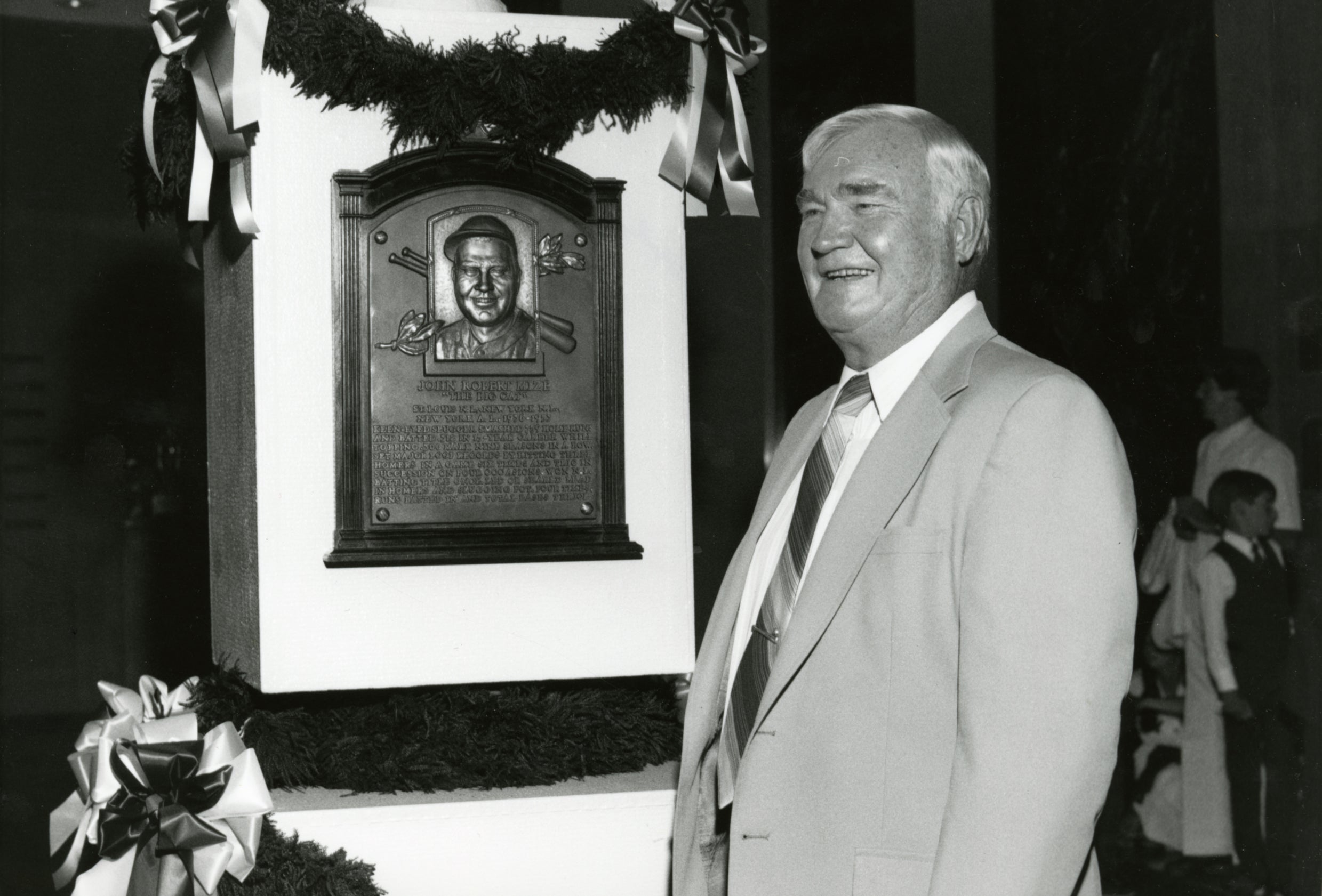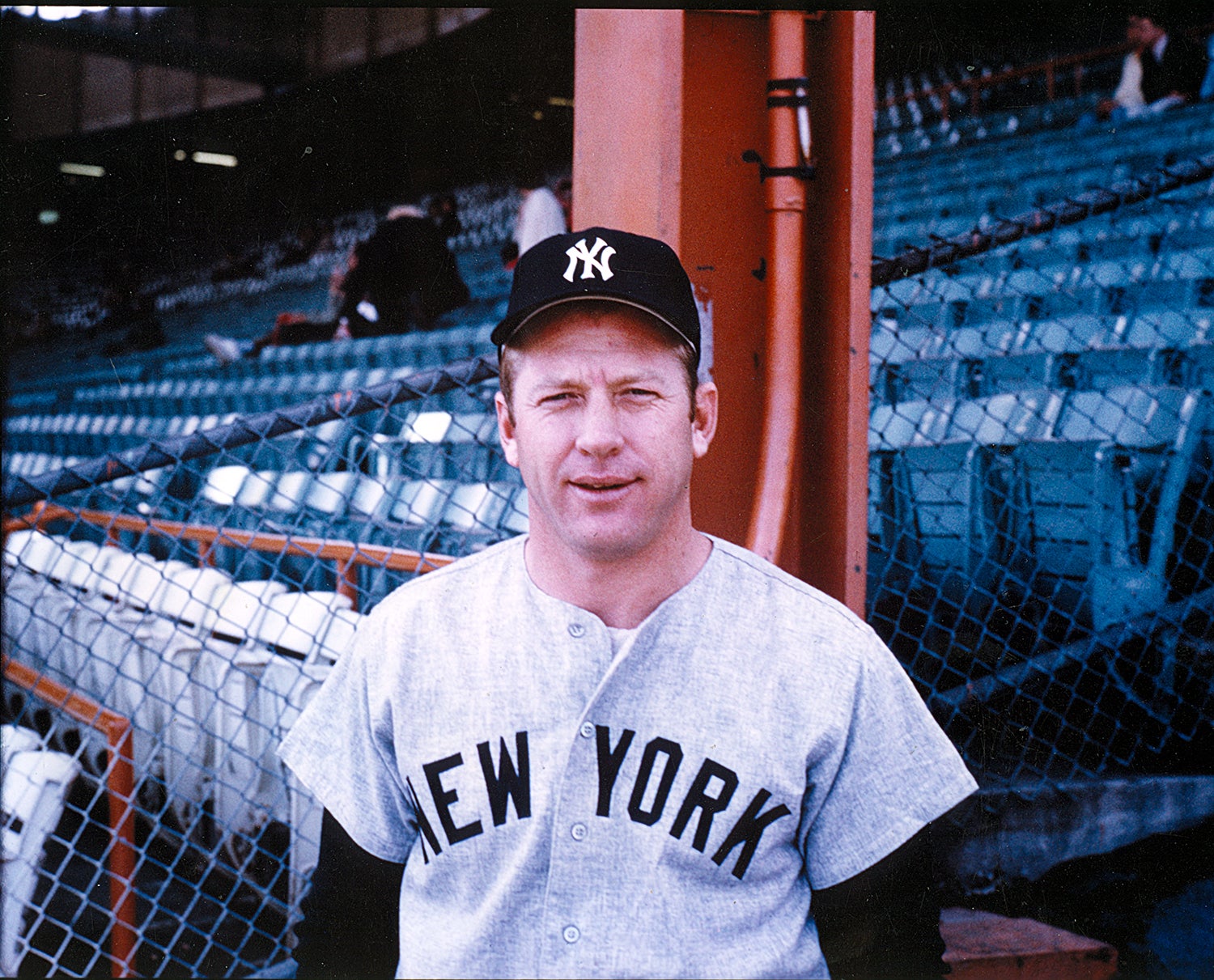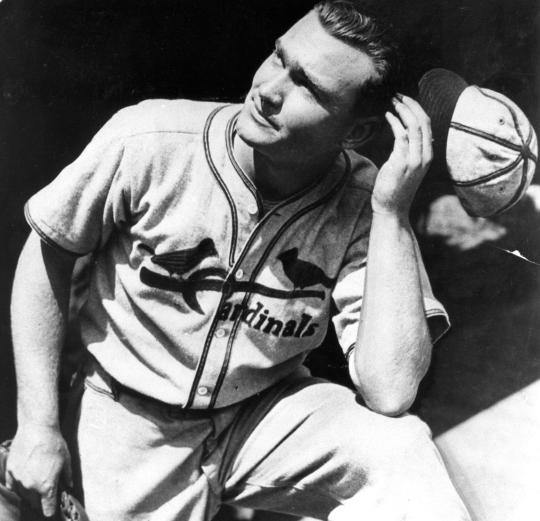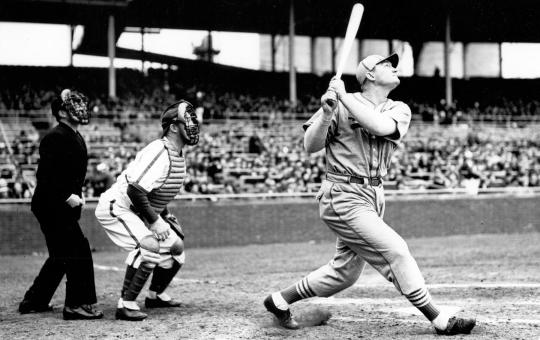- Home
- Our Stories
- Mize brought slugging bat to New York Giants
Mize brought slugging bat to New York Giants
It was four days after the attack on Pearl Harbor, so the United States was hardly abuzz with hot stove talk. The business of baseball, however, went on as usual.
That business included the trade of future Hall of Famer Johnny Mize.
In his first six seasons with the Cardinals, Mize had already led the league in each of the three Triple Crown categories – pacing the National League in home runs and batting average in 1939 and home runs and RBI in 1940. The burly first baseman was named to the NL All-Star team in four of those seasons and finished second in the MVP race in both 1939 and 1940.
But leg injuries limited Mize to just 126 games in 1941 – and though he led the league in doubles with 39 and drove in 100 runs, Mize became trade bait for the Redbirds.
Hall of Fame Membership
There is no simpler, and more essential, way to demonstrate your support than to sign on as a Museum Member.
On Dec. 11, 1941, the Cardinals sent Mize to the New York Giants for pitcher Bill Lohrman, first baseman Johnny McCarthy and catcher Ken O’Dea. And while Mize would eventually miss three prime seasons while serving in the Navy during World War II, the trade proved a steal for the Giants.
In 1942, Mize led the NL in RBI for the second time with 110 to go with 26 homers and a .305 batting average. When he returned to the big leagues in 1946 after serving in the Navy, Mize tore up the NL again before suffering a broken hand in an exhibition game against the Yankees on Aug. 5. He finished the season with a .337 batting average, 22 home runs and 70 RBI in 101 games.
The next year, Mize ruled the league with 51 home runs, 138 RBI and 137 runs scored. He became the first – and to date the only – player to record a 50-home run season while striking out less than 50 times (42).
“He can pull the ball, but he also has power in all directions,” wrote author John Lardner. “He owns sharp eyes and enough ‘plate intelligence’ to be a consistent hitter. The pitchers in the league fear no man as much, and that is the ultimate tribute.”
Mize again led the NL in home runs in 1948 with 40. The next season – at the age of 36 – Mize was traded from the Giants to the Yankees in a stretch-drive deal. He appeared in each of the Yankees’ five World Series victories from 1949-53 as a platoon player and pinch hitter for manager Casey Stengel – leading the AL in pinch hits in every season from 1951-53.
In the 1952 World Series, Mize hit three home runs and – despite appearing in only five of the seven games – won the Most Valuable Player Award.
Mize retired following the 1953 season with 359 career home runs, the sixth-best total in history at the time. In his 15 seasons, Mize hit .312 with 2,011 hits and 1,337 RBI. He walked 856 times with only 524 strikeouts.
Mize was elected to the Hall of Fame in 1981. He passed away on June 2, 1993 at his home in Demorest, Ga.
Craig Muder is the director of communications for the National Baseball Hall of Fame and Museum
Related Stories

Johnny Mize elected to Hall of Fame

Johnny Mize becomes first player with four three-homer games

Casey Stengel announces his retirement

Mickey Mantle announces his retirement from the Yankees

Johnny Mize elected to Hall of Fame

Johnny Mize becomes first player with four three-homer games

Casey Stengel announces his retirement






